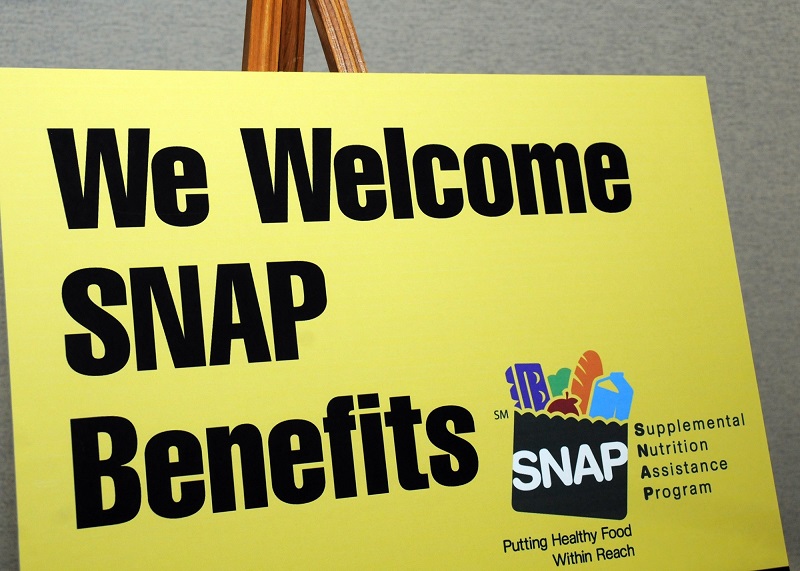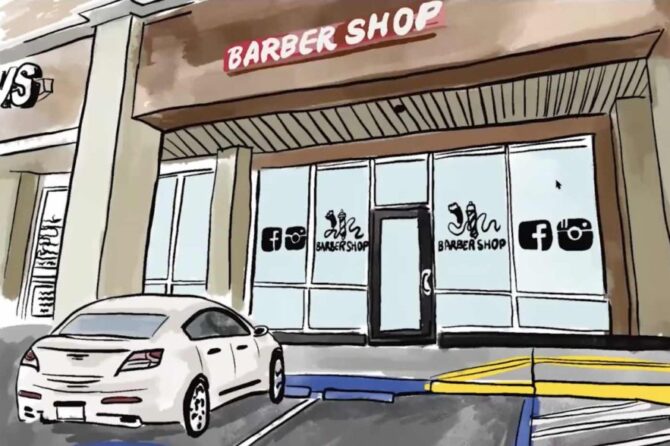MARYLAND MATTERS: Mark Griffin had a good-paying job as an ophthalmological assistant for two decades, earning enough to purchase a $150,000 home in Baltimore. But a catastrophic car accident a few years ago eroded his financial stability dramatically.
At a Senate Finance Committee hearing in Annapolis on Tuesday, Griffin described how he was able to piece together a subsistence living using several government assistance initiatives. Griffin qualified for the Supplemental Nutrition Assistance Program (SNAP) — commonly known as food stamps — but gradually saw his monthly benefit decline from about $170 a month to $11 a month.
Still, he said, it helped. “I had to go to any program that I could just to survive.”
But when the COVID-19 pandemic hit, Griffin’s monthly SNAP benefit went up to $250 a month.
“I was so surprised,” Griffin recalled. “I was happy that I was able to feed myself as well as catch up on some bills.”
The pandemic was a financial disaster for hundreds of thousands of Marylanders. But for several, like Griffin, the additional or extended benefits were a godsend. State officials say the rolls of Marylanders seeking food stamps swelled by 35% (though a Maryland Department of Human Services spokesperson on Tuesday evening did not provide statistics on the raw number of recipients).
Yet as the number of beneficiaries increased, so did the number of SNAP fraud abuses.
Many families saw their SNAP accounts drained by fraudsters. And now, with emergency federal regulations on food stamp benefits being phased out, extra benefits are diminishing and families are once again scrambling to make ends meet.
“It was like going into the Twilight Zone for days just to get information” on how to navigate the post-pandemic system, Griffin said.
The state of the state’s response to the pandemic — and specifically, the ups and downs of SNAP — was the topic of Tuesday’s two-hour hearing. The session began with testimony from leaders of the Maryland Department of Human Services, which is responsible for administering the federal SNAP program, which originates in the U.S. Department of Agriculture.
But the hearing in certain ways seemed like it was upside down — and that state officials should have been made available at the end to respond to the questions, complaints and fears of food stamp recipients and the groups that advocate for them.
Senators also heard from Renee, a single mother of three from Baltimore County who did not give her last name. Renee described how her SNAP account went abruptly from about $3,000 to $66 after being hacked.
“My kids went without hardly anything” to eat during this period, she recounted. Although local, state and federal law enforcement authorities worked to crack down on SNAP fraudsters, that provided little comfort or relief to the families who lost money, several lawmakers noted.
Department of Human Services officials said they had largely met challenges that the pandemic posed, but acknowledged that the overwhelming caseload occasionally led to system breakdowns. They also said that the problems with SNAP benefits during COVID-19 were not unique to Maryland and that the Department of Human Resources has emerged from the pandemic stronger and smarter.
“We streamlined the process for applications when other states were making it difficult,” said Lourdes Padilla, the state Human Resources secretary. “We made it easier to access benefits.”
Still, the pandemic has taken a toll on clients and government agency workers alike. When the pandemic first hit, the federal government waived a provision requiring families to reapply for SNAP benefits annually.
But that waiver was lifted this spring, and over the past few months, tens of thousands of Maryland families lost their benefits, in part because they did not know how the reapplication process worked. Calls to the Department of Human Resources help line ballooned, and the agency recently got approval from the Board of Public Works to increase the number of workers at its call center from 70 to 115.
Daniel Wait, acting deputy Human Resources secretary, said maximum wait times for callers seeking information now stands at 30 to 45 minutes — which, he acknowledged, is “unacceptable” — but will be reduced to 5-10 minutes when all the new workers are on board.
But many senators were incredulous when Padilla said she does not think her department needs any additional workers beyond those recently authorized by the Board of Public Works, and wondered why the agency was struggling to serve Maryland’s neediest families when, in the words of Sen. Malcolm Augustine (D-Prince George’s), “we have an unbelievable surplus.”
“Gov. [Larry] Hogan has always said yes to additional requests” for staff, Padilla said.
The fraud cases, which have gained widespread publicity around the country, have only impacted one in every 1,000 food stamp recipients in Maryland, the state officials said. But the result has at times been disastrous for families like Renee’s who saw a substantial portion of their benefits dry up.
The federal government is able to make back payments to families who have been victims of fraud, after an investigation into the case has been completed. Meanwhile, California and Washington, D.C., have arranged to compensate the fraud victims directly and in advance with their own funds — something that Maryland has been reluctant to do.
“State funds must be leveraged and utilized” to make up the loss, said JD Robinson, anti-hunger program coordinator for the advocacy group Maryland Hunger Solutions.
Lawmakers promised more oversight of the state’s food stamp program — and hinted that there could be legislative remedies to make the system more efficient.
Photo: U.S. Department of Agriculture photo.










